If you are an upper elementary reading teacher, I bet you have to teach your students how to find the main idea of a nonfiction text… more than likely that is one of your state standards, and also something that is included on the end of year reading assessment.
But, it’s also a really important reading skill that we want our students to know how to do.
When we identify the main idea of the text, we are able to figure out the important idea or concept in the text. This skill will help us remember what we read as well as build up our background knowledge for the topics that we are learning about.
If your students struggle to identify the main idea, or if you are getting ready to introduce it for the first time to your students, here are 7 different strategies you can teach your students to help them identify the main idea.
7 Strategies to Help Students Learn How to Find the Main Idea of Nonfiction Texts
1. Question the Topic
This is a super simple strategy and can usually help the students discover the main idea of a text… and understand the connection between main idea and author’s purpose.
First, have students identify the topic of the text. This is usually a single word or phrase.
Then have students ask the question “What does the author want me to know about this topic?”
Usually, this answer will help them figure out the main idea… They start to realize that most texts have a specific topic they are focusing on, but the main idea of the text is closely connected to why the author wrote the text. The author wants the reader to know or understand something specific and that is usually the main idea.
Asking the question “What does the author want me to know about this topic?” can usually help students identify the main idea of the text.
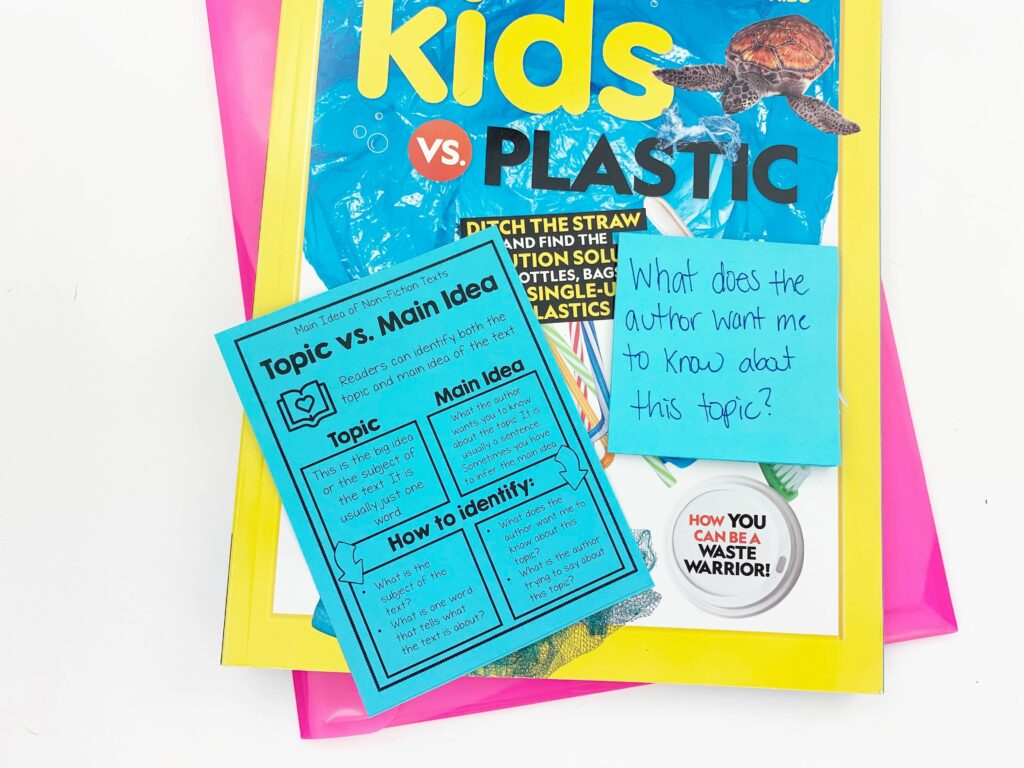
2. Identify Topic Sentence
A topic sentence is the sentence that will state the main idea for that specific paragraph. This means that if students know what a topic sentence is and they know how to identify it, they can identify a clue that will help them figure out the main idea.
If students are identifying the main idea of a paragraph or a small section, they can just look for the topic sentence and then re-write it so it clearly states the main idea.
If the students are identifying the main idea of an entire text, they can find the topic sentences for each small paragraph or section and then synthesize that information to create a topic sentence for the entire text.
This can be a pretty straightforward strategy, but you have to use it with caution. Students are often taught that the topic sentence is the first sentence of a paragraph. And it often can be… but it isn’t always. It’s important for students to understand what a topic sentence is rather than just immediately look at the first sentence and assume it states the main idea of the paragraph.
But if your students get really good at being able to identify the topic sentence, then they have a strategy that will help them focus on the main idea of the text.
3. Use Headings/Subheadings
One way you can teach your students to identify the main idea is to have them use the headings or subheadings in the text. This can be particularly helpful if they are reading a lengthy article or a book with lots of chapters/sections.
Hopefully, your students know and understand that headings can give them clues about what a particular section of text will be about. If they know that a heading will give them clues to the main idea of a specific text section, they can synthesize the information shared in the headings to help them come up with the main idea for the entire text.
4. Look for repeated words or phrases
If it’s important it will get repeated! Think about how many times you tell your students to put their name on the paper or to double-check their work. We naturally repeat words or phrases that are important and the same thing happens in the texts that we read.
You can teach your students to look for keywords and phrases that get repeated in the text. They can either underline them or make a list of them on the side of the text. If they notice a word or phrase gets repeated over and over and over in a particular article or text, it’s probably a clue that it’s important to the topic and should probably be included in the main idea.
5. Consider the title
This strategy could work in two different ways.
First, you can teach students to look at the title and think about how the title communicates what the text will mostly be about. Basically, we are teaching them that a title can be a clue or a hint to the reader that shares a preview of what the text might be about. Often times the title includes the topic or a keyword or phrase that can be connected to the main idea.
You can also teach your students to come up with their own title. You can either have students cover up the title for the text, or you can remove it for them. Ask them to think about a title they would give the text. When students think about what title they would give the text, they start to think about what the text is mostly about… which is the main idea.
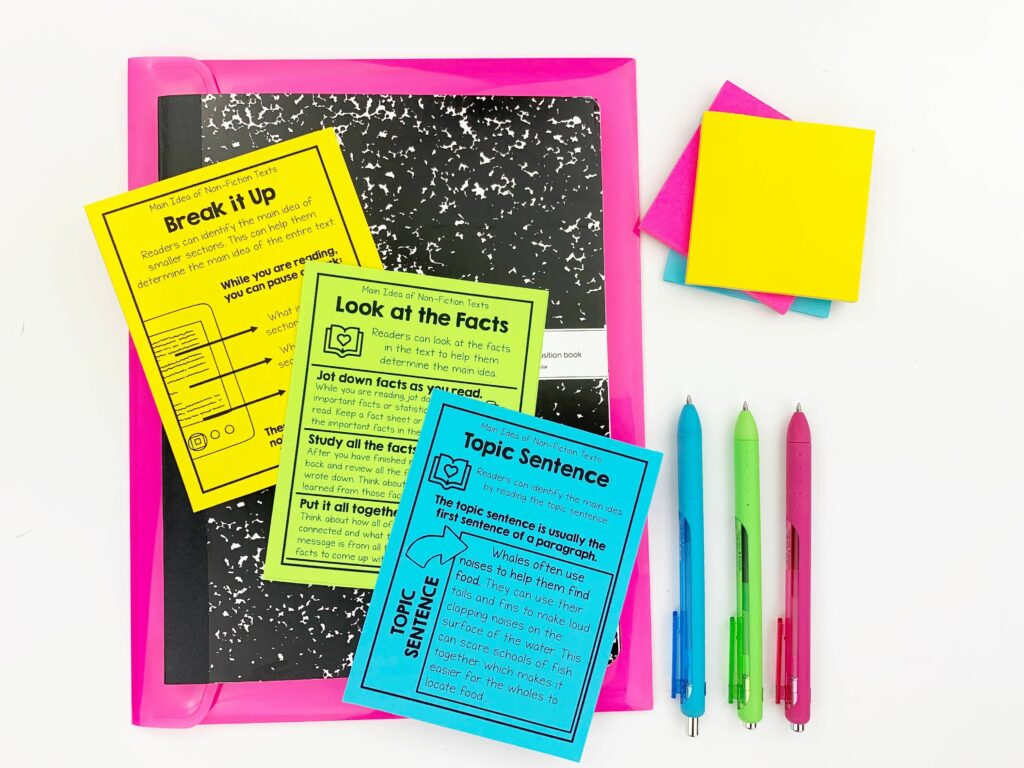
6. Keep a list of facts
I love teaching my students to stop-and-jot while they read. This simply means that they are jotting down their questions, connections, or thoughts about the text.
When they are reading nonfiction text, I like to have them make a list of key facts. This can be as simple as making a bulleted list of key facts while they are reading. When students have finished reading, they can quickly look over their key facts. Seeing JUST the facts can help them focus on the important details related to the text and it can help them identify the main idea of the text.
7. Break up the text into smaller sections
This is a great strategy to teach students if you want them to identify the main idea of a longer text. One thing you can do is teach your students to break up the text into smaller sections and then pause at the end of each section and ask “What is this section about?”
This helps students identify the main idea of smaller sections rather than having to wait until the very end to think about the main idea of the text.
I like to have students jot down their notes about each section on a post-it note or in the margins of the text. Then, once they have finished, they can go back and re-read their notes. Looking at JUST the notes will help them think about the main idea of the text, rather than relying on their memories alone.
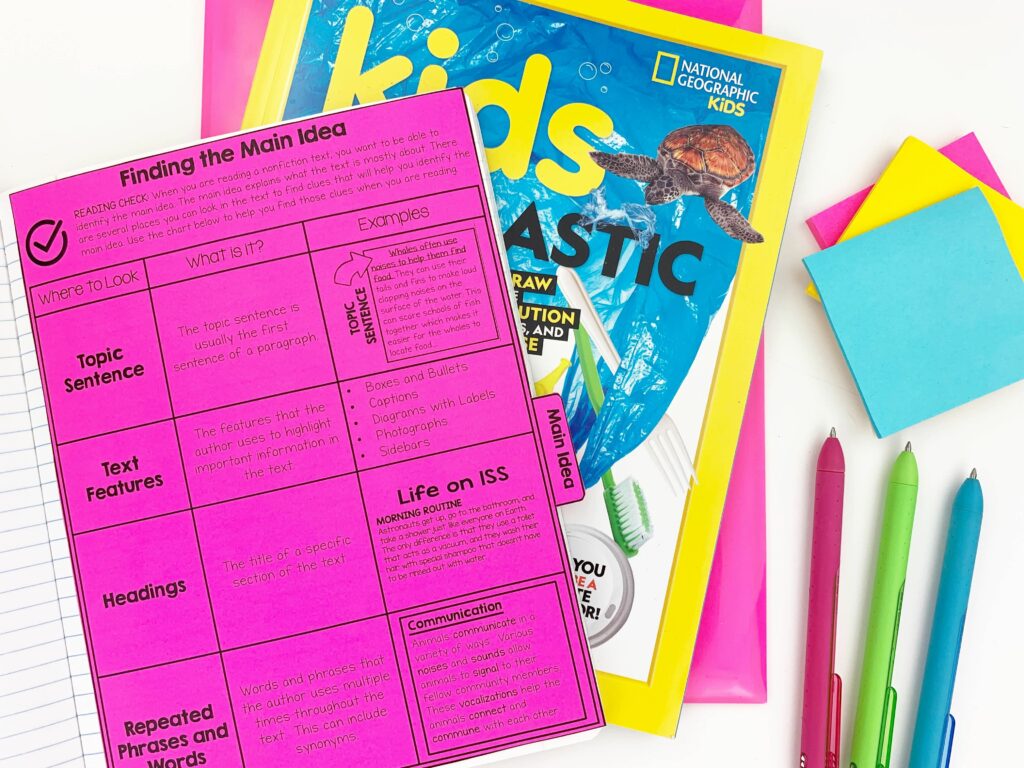
Which strategies should I teach my students?
Now you definitely don’t need to teach all seven strategies to your students, but you might want to teach them 3-4 different strategies. I always like teaching students more than one strategy for any given reading skill.
Teaching multiple strategies can be helpful for a few reasons:
- Not every strategy will work with every text.
- Not every strategy will resonate with every student.
- It can be helpful to have multiple strategies to use as a self-check to confirm our thinking.
Hopefully, you feel a little more excited and confident in your ability to teach main idea to your students…I can’t wait to hear which strategies you decide to incorporate into your reading block.
Happy Teaching!
Summarizing Nonfiction Checklist
Summarizing nonfiction can be really challenging. There are SOOOOO many things your students need to be able to do in order to successfully summarize a nonfiction text. But, with the help of this checklist, your students will remember the important characteristics of a nonfiction summary.
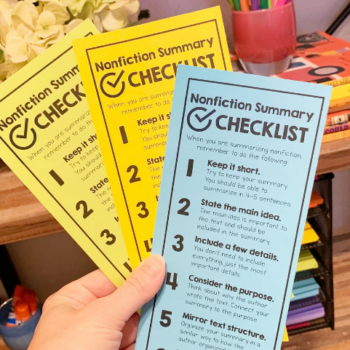


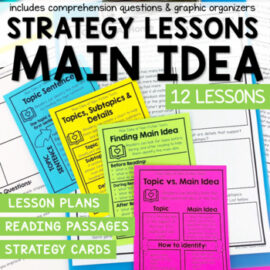
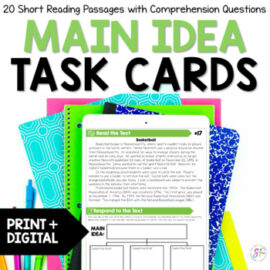
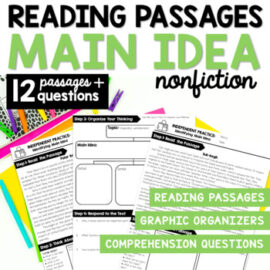
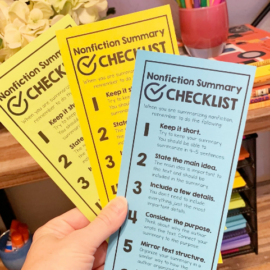
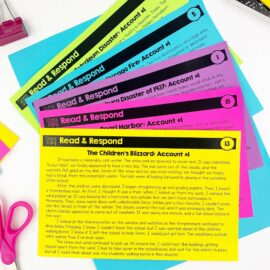
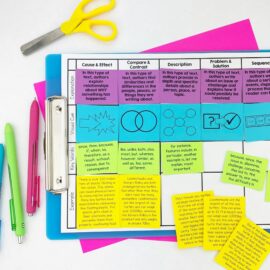





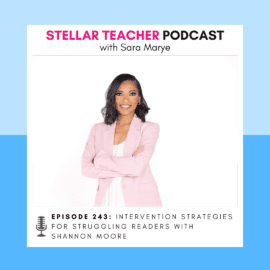



Leave a Comment
You must be logged in to post a comment.